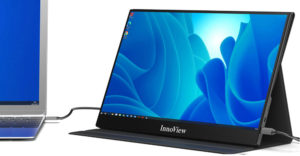
Google has brought its Chrome Web browser to the Android Market.
A beta edition of the browser is available from the app shop now for free, but since its operation is restricted to the latest version of the mobile operating system, Android 4.0 (Ice Cream Sandwich), only about 1 percent of Android’s millions of users will be able to take the software for a test drive.
Making the browser a downloadable app means users don’t have to wait for phone makers to install the browser on their hardware. On the other hand, they still have to wait for those phone makers to upgrade their handsets to Ice Cream Sandwich.
In addition to speed and simplicity, Chrome for Android beta has synchronization features that allow the user to seamlessly access tabs and bookmarks across devices. For instance, a tab open in desktop Chome can be accessed in Android Chrome. However, because that feature has privacy implications, it’s turned off by default.
Privacy in the browser isn’t an afterthought, but something considered by its design team from the start of the project, Google Senior Vice President for Chrome and Apps Sundar Pichai explained. Like its desktop alter ego, mobile Chrome has a private browsing mode, called “Incognito,” and the ability to fine-tune privacy options.
Built From Scratch
Chrome for Android was built from scratch to accommodate the limitations of the small screen and to take advantage of the technological advances in the architecture of Ice Cream Sandwich.
The design team reimagined tabs so they fit naturally on a small-screen phone, Pichai noted. Flipping or swiping between an unlimited number of tabs was also designed to be intuitive.
The browser also tackles the annoyance of tapping links on a small screen. It has a Link Preview feature that zooms in on links and makes choosing the right one easier.
Double-Duty Address Bar
As in desktop Chrome, the address bar in the mobile browser doubles as a search bar. This not only saves on real estate, but it can also help cut down on typing because the browser makes recommendations — gleaned from a variety of sources, including your browser cache — as you type.
Mobile Chrome also has strong support for HTML5, including video delivered that way. That’s important because the browser doesn’t support Adobe Flash for mobile. HTML5 also contributes to the browser’s faster performance, removing minute delays between finger flicks and screen actions.
In addition, Google is introducing in the browser debugging tools that it hopes will simplify the creation of interactive Web content and the debugging of mobile websites.
‘Latest and Greatest’
The arrival of Chrome on Android is another sign that Google intends to use Android as a platform for all of its products, according to Yankee Group Research Director Carl Howe.
Aiming Chrome at Ice Cream Sandwich users makes sense to Howe. “It’s a practical decision,” he told LinuxInsider. “They’re looking to use their latest and greatest code, not their oldest.”
“Besides,” he added, “Google’s not the sort of company that looks back and asks, ‘What about our legacy customers?'”
Mobile Chrome is also a way for Google to ready itself for the post-PC era characterized by the growth of smartphone and tablet usage, observed ABI Research Mobile Devices Analyst Michael Morgan. “They’re using this browser to bridge the gaps between desktop, smartphone and tablet,” he told LinuxInsider.
Users are a big winner in this new release, observed Rob Enderle, president and principal analyst for the Enderle Group. “Users want one browser experience,” he told LinuxWorld. “The don’t want multiple browser experiences on different devices.”
“From a user perspective, this announcement is all goodness,” he said. “They get a better browser.”




















































